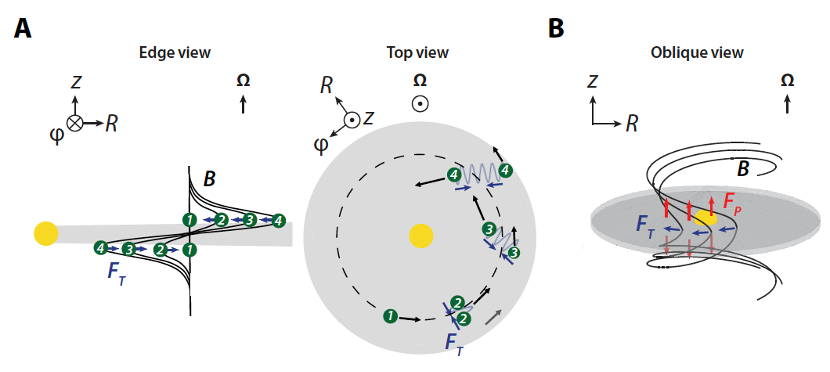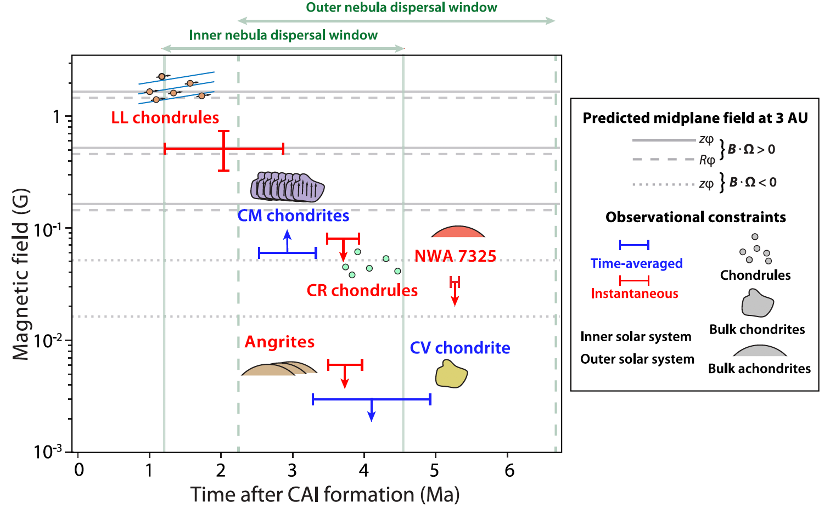The solar system formed about 4.6 billion years ago. During that time, left-over materials of gas and dust orbited the proto-Sun and formed a disk known as the “solar nebula”. Through a sequence of growth by coagulation and accretion, dust in the solar nebula eventually grow to form our planetary system. The solar nebula is the counterpart of “protoplanetary disks”, which are commonly found around other young stars in the Milky Way. Magnetic fields are known to play a crucial role in the formation, evolution, and dynamics of protoplanetary disks, and hence the processes of planet formation. Currently, attempts to directly measure or infer magnetic field from protoplanetary disks from astronomical observations have been unsuccessful. On the other hand, ancient meteorites have the potential to record the magnetic field in the solar nebular when they formed, which can be deciphered from techniques in the field known as paleomagnetism.
 Figure 1:Mechanisms to drive angular momentum transport in protoplanetary disks: magnetorotational instability (A), and magnetized disk wind (B).
Figure 1:Mechanisms to drive angular momentum transport in protoplanetary disks: magnetorotational instability (A), and magnetized disk wind (B).
Recently, Prof. Xuening Bai and collaborators (Prof. Benjamin Weiss from MIT and Prof. Roger Fu from Harvard) published a review article in “Science Advances”, which is featured on the cover of the January 2021 issue. This 20-page review systematically describes the current understanding of solar nebular magnetism from theory and astronomical observations, as well as the principles and results from paleomagnetic measurements. The combination of the two places strong constraints on the evolution of the solar nebula and certain processes of planet formation.
The theory of solar nebular magnetism is largely built upon the knowledge, inferred from astronomical observations, that protoplanetary disks accrete onto the central protostar and drive outflows, with typical lifetime of a few million years. Driving accretion and outflows generally require the presence of magnetic field, mainly via the magnetorotational instability or magnetized disk winds, whose rates scale with field strength. So far, a handful of meteorite samples with sufficiently comprehensive paleomagnetic information have been applied in this context, with inferred field strength consistent with theoretical expectations, thus providing the first direct observational support to the theory of nebular magnetism. Moreover, because meteorites can be accurately dated, paleomagnetic studies further indicate that the solar nebular field strength decays with time, with nebular lifetime in between 3-4 Myrs, similar to typical protoplanetary disks. These results also provide constraints to the mechanisms of chondrule formation, and timescales of giant planet formation.

Figure 2: Time evolution of solar nebular magnetic field strength from paleomagnetism.
Link to the paper: https://advances.sciencemag.org/content/7/1/eaba5967
Tsinghua University News: https://news.tsinghua.edu.cn/info/1007/84300.htm